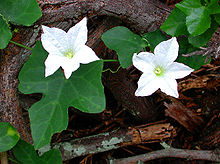Abstract:
BACKGROUND AND PURPOSE: Shogaols are reported to possess anti-inflammatory and anticancer activities. However, the antimetastatic potential of shogaols remains unexplored. This study was performed to assess the effects of shogaols against breast cancer cell invasion and to investigate the underlying mechanisms.
http://www.greenmedinfo.com/article/6-shogaol-active-constituent-ginger-inhibits-breast-cancer-cell-invasion
http://www.ncbi.nlm.nih.gov/pmc/articles/PMC3010581/
Shogaol, also known as (6)-shogaol, is a pungent constituent of ginger similar in chemical structure to gingerol. Likezingerone, it is produced when ginger is dried or cooked.
Shogaols are artifacts formed during storage or through excess heat, probably created by a dehydration reaction of the gingerols. The ratio of shogaols to gingerols sometimes is taken as an indication of product quality.
The name ‘shogaol’ is derived from the Japanese name for ginger (生姜、shōga).
Shogaol is rated 160,000 SHU on Scoville scale. When compared to other pungent compounds, shogaol is moderately more pungent than piperine, but less than capsaicin.
- McGee, Harold (2004). On Food and Cooking: The Science and Lore of the Kitchen (2nd ed.). New York: Scribner pp. 425-426.
- NSF International Determination of Gingerols and Shogaols in Zingiber officinale rhizome and powdered extract by High-Performance Liquid Chromatography.
- Ula (1996), op. cit. “The HPLC measures the capsaicinoid(s) in ppm, which can then be converted to Scoville units using a conversion factor of 15, 20 or 30 depending on the capsaicinoid.” This would make capsaicin 15,000,000 SHU
more info
6-Shogaol
A bioactive ingredient of ginger root (Zingiber officinale), a medicinal plant having anti-nausea, anti-inflammatory, and anti-carcinogenic properties and a carminative effect
- Catalog No: APH-02034
- CAS Number: 555-66-8
- Chemical Formula: C17H24O3
- Molecular Weight: 276.37
- Purity: > 95% determined by HPLC
- Appearance: Viscous yellow liquid
- Solubility: Soluble in methanol and ethanol
|
- Stability: Unstable at room temperature in the presence of oxygen and light. Stable over extended period at -20°C.
- Storage: -20°C
- Shipping: On ice (5°C)
- Handling: Avoid exposure to oxygen and direct sunlight
|
 6-Shogaol is isolated from the dried or cooked rhizomes or roots of the plant Zingiber officinale (ginger). It is a perennial reed-like plant with annual leafy stems, about a meter (3 to 4 feet) tall. 6-Shogaol is a dehydrated 6-gingerol molecule that has lost a molecule of water during the drying or cooking process.
6-Shogaol is isolated from the dried or cooked rhizomes or roots of the plant Zingiber officinale (ginger). It is a perennial reed-like plant with annual leafy stems, about a meter (3 to 4 feet) tall. 6-Shogaol is a dehydrated 6-gingerol molecule that has lost a molecule of water during the drying or cooking process.
Ginger produces clusters of white and pink flower buds that bloom into yellow flowers. Because of its aesthetic appeal and the adaptation of the plant to warm climates, ginger is often used as landscaping around subtropical homes. Traditionally, the root is gathered when the stalk withers; it is immediately dried, scalded, or washed and scraped, to kill it and prevent sprouting.
6-Shogaol is isolated from dried or cooked ginger root using ethanol and other organic solvents followed by chromatographic purification. Aphios isolates 6-shogaol utilizing near-critical and supercritical fluids using CXF and CXP enabling technology platforms as alternatives to ethanol and conventional organic solvents techniques.
Biological Activity:
Ginger (Zingiber officinale Roscoe, Zingiberaceae) is a medicinal plant that has been widely used in Chinese, Ayurvedic and other global herbal medicinal practices since ancient times for a wide array of ailments including arthritis, rheumatism, sprains, muscular aches, pains, sore throats, cramps, constipation, indigestion, vomiting, hypertension, dementia, fever, infectious diseases and helminthiasis (Ali et al., 2008).
Ginger has been approved for use by Germany’s Commission E, the agency responsible for regulating the use of herbal products in that country (Blumenthal, 1998). Ginger has recently been studied scientifically for its effect on nausea and vomiting associated with motion sickness, surgery, pregnancy and cancer chemotherapy.
There may be several mechanisms of action in play relative to the antiemetic properties of ginger. It has been reported that the antiemetic qualities may be derived from ginger’s anti-serotonin 3 effects on the gastrointestinal and central nervous system (Chaiyakunapruk et al., 2006). In a study of guinea pig ileum, it was found that certain ingredients of ginger (6-, 8- and 10-gingerols) inhibit the anti-serotonin 3 receptor function (Huang et al., 1991 and Yamahara et al., 1989). In addition, these active ingredients have been shown to affect gastric motility and potentially have an antispasmodic effect on the gastrointestinal system (Hashimoto et al., 2002 and Suekawa et al., 1984).
Pan et al. (2008) investigated the inhibitory effects of 6-shogaol and a related compound, 6-gingerol, on the induction of nitric oxide synthase (NOS) and cyclooxygenase-2 (COX-2) in murine RAW 264.7 cells activated with LPS. Their results show that 6-shogaol downregulates inflammatory iNOS and COX-2 gene expression in macrophages by inhibiting the activation of NF-κB by interfering with the activation PI3K/Akt/I κB kinases IKK and MAPK.
References:
Ali B, Blunden G, Tanira M and Nemmar A. (2008). Some phytochemical, pharmacological and toxicological properties of ginger (Zingiber officinale Roscoe): A review of recent research. Food and Chemical Toxicology. 46(2): 409-420.
Blumenthal M, Busse W, Goldberg A, Gruenwald J, Hall T, Klein S, Riggins C and Rister R. (1998). The Complete German Commission E monographs. Therapeutic Guide to Herbal Medicines, Austin TX, American Botanical Council.
Chaiyakunapruk N, Kitikannakorn N, Nathisuwan S, Leeprakobboon K and Leelasettagool C. (2006). The efficacy of ginger for the prevention of postoperative nausea and vomiting: a meta-analysis. Am. J. Obstet. Gynecol. 194, 95–99.
Chen C, Kuo M, Wu C and Ho C. (1986). Pungent Compounds of Ginger (Zingiber officinale Roscoe) Extracted by Liquid Carbon Dioxide. Journal of Agriculture and Food Chemistry 34(3): 477-480.
Hashimoto K, Satoh K, Murata P, Makino B, Sakakibara I, Kase Y, Ishige A, Higuchi M and Sasaki H. (2002). Component of Zingiber officinale that improves the enhancement of small intestinal transport. Planta Medica. 68:936-9.
Huang Q, Iwamoto M, Aoki S, Tanaka N, Tajima K, Yamahara J, Takaishi Y, Yoshida M, Tomimatsu T and Tamai Y. (1991). Anti-5-hydroxytryptamine 3 effect of galanolactone, diterpenoid isolated from ginger. Chem. Pharm. Bull. (Tokyo) 39, 397–399.
Pan M, Hsieh M, Hsu P, Ho S, Lai C, Wu H, Sang S and Ho C. (2008). 6-Shogaol suppressed lipopolysaccharide-induced up-expression of iNOS and COX-2 in murine macrophages. Mol Nutr Food Res. 52(12):1467-77.
Suekawa M, Ishige A, Yuasa K, Sudo K, Aburada M and Hosoya E. (1984). Pharmacological studies on ginger: I. Pharmacological action of pungent constituents, (6)-gingerol and (6)-shogaol. J Pharmacobiodyn. 7:836-48.
Yamahara J, Rong H, Iwamoto M, Kobayashi G, Matsuda H and Fujimura H. (1989). Active components of ginger exhibiting anti-serotonergic action. Phytother. Res. 3, 70–71.














-Molecular-diagram.jpg)
















 6-Shogaol is isolated from the dried or cooked rhizomes or roots of the plant Zingiber officinale (ginger). It is a perennial reed-like plant with annual leafy stems, about a meter (3 to 4 feet) tall. 6-Shogaol is a dehydrated 6-gingerol molecule that has lost a molecule of water during the drying or cooking process.
6-Shogaol is isolated from the dried or cooked rhizomes or roots of the plant Zingiber officinale (ginger). It is a perennial reed-like plant with annual leafy stems, about a meter (3 to 4 feet) tall. 6-Shogaol is a dehydrated 6-gingerol molecule that has lost a molecule of water during the drying or cooking process.